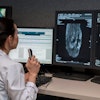A California radiologist is claiming that serious errors were made in radiology readings at a hospital in the state staffed by radiologists working for Radisphere National Radiology Group, a national provider of professional radiology services.
The charges by Salma Khan, MD, were detailed in an article published July 24 by the Hanford Sentinel of Hanford, CA. The story describes events that took place at hospitals operated by Adventist Health Central Valley Network of Hanford, a town in California's Central Valley just south of Fresno.
Khan worked at Adventist as a mammography and nuclear medicine specialist on a locum tenens basis for Radisphere from March until July 2010. The Adventist network includes hospitals in Hanford and Selma, CA; the majority of images have been read remotely by Radisphere radiologists, according to Khan.
While she worked there, doctors from other specialties came to her to reread scans that didn't jibe with what they were seeing from readings performed by Radisphere physicians, she told AuntMinnie.com.
"One patient supposedly had a lung mass and was sent to biopsy," she said. "His doctor called me to look at the image, saying, 'Hey, this is pneumonia, not a mass.' "
Mistaken readings included large missed masses on CT chest scans and fractured lumbar vertebrae that were declared normal, Khan said. One patient whose bones were identified as healthy was later found to have multiple metastatic deposits. One female patient had an early ultrasound scan and was diagnosed with ectopic pregnancy; she went to surgery, but there was no ectopic pregnancy, only a normal one and an ovarian cyst.
"Radisphere is providing poor service," Khan said. "Eight out of 10 CTs I reviewed had significant findings that had been missed."
Radisphere of Beachwood, OH, was launched in April as the new incarnation of teleradiology services provider Franklin & Seidelmann Subspecialty Radiology. Radisphere offers both subspecialty image interpretation via teleradiology and onsite staffing with company-employed radiologists. The business model has raised concerns among some radiologists who believe it could jeopardize radiology's traditional model of community-based radiology groups who contract with hospitals.
Radisphere has been covering onsite services at Adventist Health Central Valley since February, according to Clayton Larsen, the company's senior vice president of client and network development. Full services, including night and weekend final-read coverage and remote subspecialty coverage, began May 1.
"We are still in the early stages of the deployment of our full suite of services, with some full-time onsite staff as well as locums," he told AuntMinnie.com in an e-mail.
Khan's complaint notwithstanding, there has been no interruption in Radisphere's services, according to Christine Pickering, Adventist Health director of marketing and communications.
"No formal complaints have been filed to my knowledge, and the number of concerns that have been expressed is within the scope of those expressed with other radiology groups [we've contracted with]," she told AuntMinnie.com. "Radisphere is providing more radiology services than previous groups, adding after-hours and subspecialty coverage. Onsite staffing is consistent with previous groups, but we now have access to more subspecialists."
Khan claims that one problem at Adventist is a lack of quality control onsite: no radiology department meetings, peer review, or onsite proctoring. Radisphere has a toll-free number to call to report discrepancies, but it's unclear whether the communication is going through, Khan said.
"There's a paragraph at the end of each Radisphere report about quality control," she said. "But if you call the number [for service], often no one picks up."
On the contrary, Larsen said, Radisphere has a detailed quality assurance program, under which it tests all of its radiologists before they are hired and rigorously tracks peer review data by performing random sampling of its radiologists' reports and having other radiologists read them, without benefit of the original. The company also follows up with double-blind reads in cases brought after the fact by a referring physician who feels the original diagnosis wasn't accurate based on subsequent clinical findings.
Besides, literature shows that a highly trained subspecialist who performs a higher volume of a particular kind of study has greater accuracy than a general radiologist who reads a lower volume of the same study, Larsen said.
"All the data we acquire is reported to our clients on a monthly basis in a transparent and collaborative fashion. Most of the time, it is the first quantitative peer-review information they have ever received from radiology," he said. "Our peer-review process is far beyond what is typically carried out by a local radiology practice and exceeds what is recommended by the American College of Radiology."
By Kate Madden Yee
AuntMinnie.com staff writer
August 2, 2010
Related Reading
RAS interventional radiologists sue Sutter Health, July 1, 2010
Are hospitals playing hardball with radiology groups? April 22, 2010
Radisphere skirts local groups in bid for hospital contracts, April 15, 2010
Imaging Advantage creates uproar with new business model, July 9, 2009
Florida Hospital forms own radiology group, May 22, 2008
Copyright © 2010 AuntMinnie.com




















